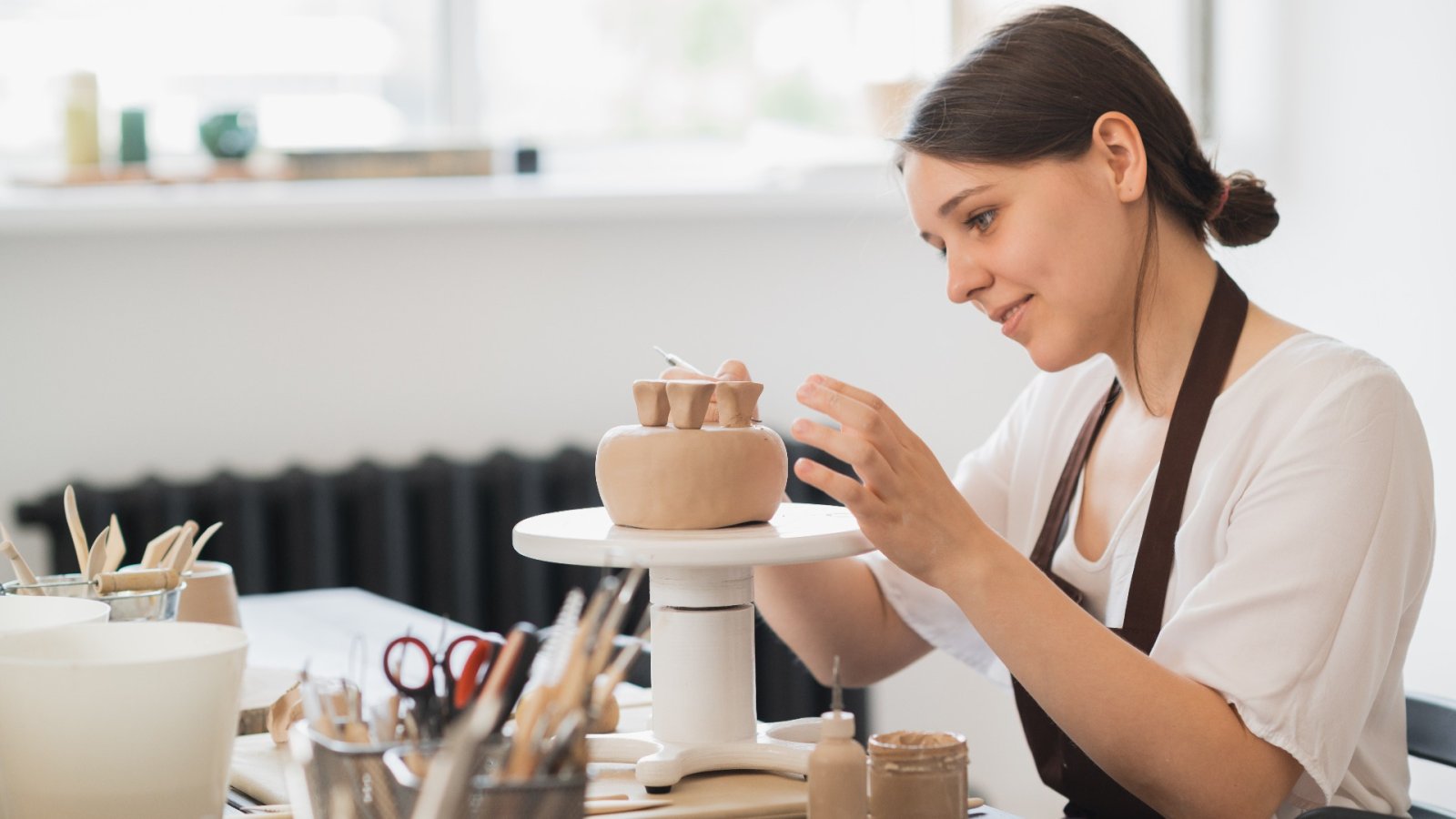Pottery was a critical component of the Midcentury Modern move, as the heart of the craft naturally serves the Midcentury Modern style's call for things to meet conditions in form and function. This means that they had to be useful and beautiful, so ceramics produced during this time in studios was made by talented artisans. Pottery creation traveled Europe and the US, while artisans have made studios that would become famous over time, like Arabia, Gustavsberg, and Bitossi Ceramiche.
While the more general Midcentury Modern movement focused on the functional, classic, and simple, some ceramicists practicing during this era were more experimental and created different styles of pottery. Across Europe, the types varied from stunning and useful, to more magical ones. However, the shapes, geometric patterns, and color palettes remained truthful to the era.
A lot of studios had been set in ceramic production since the 1800s, but post-war changes in creation methods and in the style have led to a remarkably prosperous time for a lot of the manufacturers. There were new designers and techniques implemented, making more changes and aiming towards more abstract types and geometric designs.
The Gustavsberg factory is one of the most famous factories in Sweden, established in 1826. The place delivered amazing pieces over time and evolved in an incredibly important part of the country’s cultural legacy.
Some of the most unique pottery marvels that have been made here were produced under Stig Lindberg, who worked as the art director for Gustavsberg in the early ’50s and also in the ’70s. But Lindberg created more than pottery, although ceramics made him famous. Numerous famous designers visited the Gustavsberg factory in history. Sweden played a major part in ceramic creation during this time, but there were numerous other manufacturers and studio artists that became celebrities. For instance, Italy took was way more involved in Midcentury ceramic creation than other countries.
One of the most famous names in Italy is certainly Aldo Londi - for his blue animal pieces for Bitossi Ceramiche. His most notable display was the Rimini Blu, available between 1955 and 1965, represented by the blue frost and replicated conceptual geometric figures. Despite the prolific nature of his work, the Rimini Blu range had over 155 designs in it. What's more, Londi is still very popular today and you can buy one of his notorious art pieces for around £2500.
Another top studio of the Midcentury pottery movement was Arabia glassware and ceramics company. Artistic director Kaj Franck updated the firm with new styles and a new field that suited flawlessly with the Midcentury Modern style. His special approach was comparable to that of the Midcentury Modern furnishings creators and he got inspired by the thought that ready-made objects should be both functional and gorgeous.
Besides these bigger factories, there were also a number of studio potters across the continent. One of them was Lucie Rie, an Austrian-born artist practicing in the UK. She worked in Vienna, Paris and London in the 1930s. Her stunning art is presented in a clean condition and muffled tones, with many of her dishes marked by a prominent, extended lip.
She is also known for her hand in preparing the master potter, Hans Coper, a German-born British artist who worked as her assistant. A lot of his work is abstract but functional and he also used a softened color palette, as he leaned towards the clean style of Midcentury Modern movement.
A couple of ceramisists, Getrud and Otto Natzler also adopted the style. Moreover, Otto himself gave the best explanation of his partner's art as being flowing, ethereal, and graceful. Indeed, the forms were simple, but very impressive, combined with the over 2000 glazes developed by Otto. Every piece is unique. Another couple, Rose and Erni Cabat started their ceramic voyage in New York, then moved to Tucson, Arizona. They became very popular and celebrated. Rose and Erni Cabat were known for the extensive sequence of narrow-stemmed pots inspired by organic forms.
All around the continent of Europe, there are thousands of amazing ceramic pieces that have been designed during the Midcentury Modern era. Even though there was the prolific character of the creators and the possibilities of the manufacturers permitted them to mass-produce a lot of these articles, every piece you will find is truly unique. Mid-century modern ceramics enclose the ethos of the era, which is beautiful, functional, and accessible, convenient.






